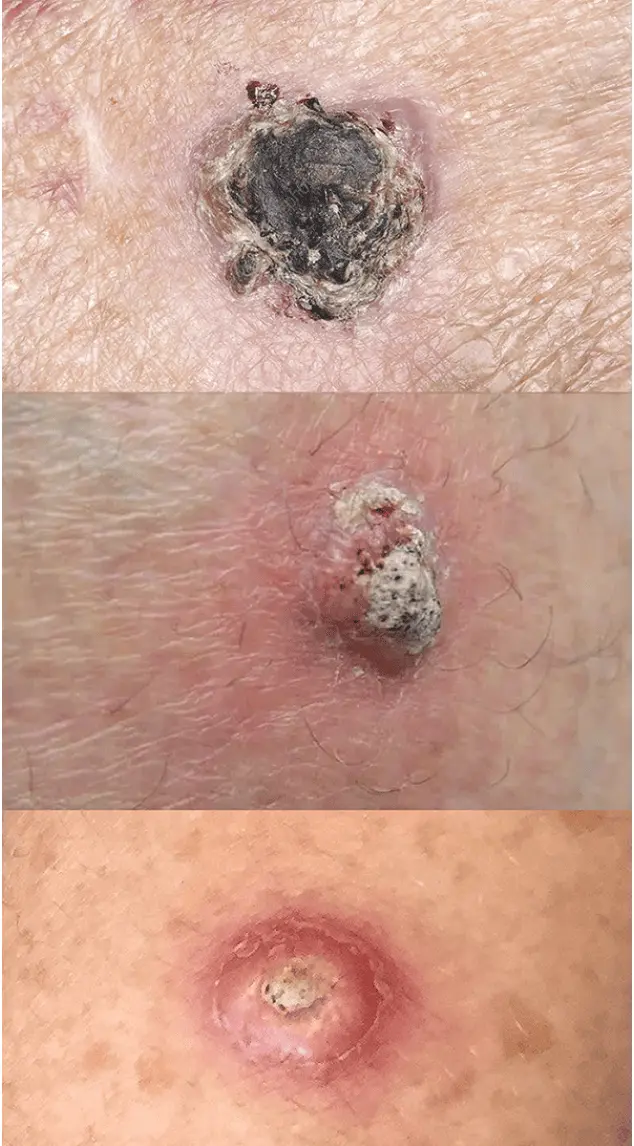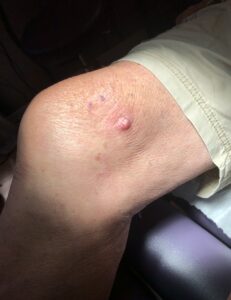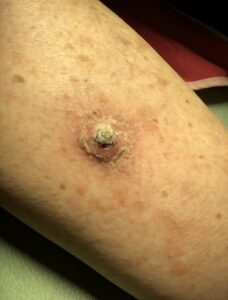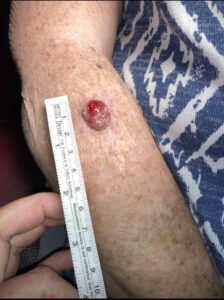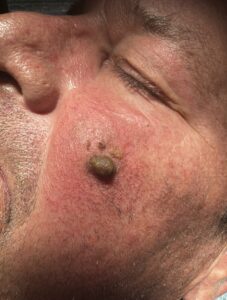An estimated 1.8 million cases of squamous cell carcinoma (SCC) are diagnosed in the U.S. each year. Also called “squamous cell cancer,” it’s the most common form of skin cancer, usually found on areas of the body damaged by ultraviolet (UV) rays from the sun or tanning beds. However, it may also develop in areas that get little or no sun like the mouth, genitals or anus due to injury or HPV (human papillomavirus) infection.
Whether from sunlight, tanning beds, injury or an HPV infection, squamous cell cancer can show up on the skin as a non-healing sore or area of rough skin. Typically not life-threatening, it tends to grow slowly. Without treatment, it can grow deep and injure nerves, blood vessels and more, and spread to other parts of the body, which can be fatal. Early detection can prevent squamous cell cancer from growing deep into the skin. In fact, when found early, it is highly treatable.
While anyone can develop squamous cell cancer, those with greater risk include people with light skin tone. Individuals who spend significant periods of time in the sun, use or have used tanning beds, or those who take medication to prevent the body from rejecting a transplanted organ are also at greater risk for SCC.

